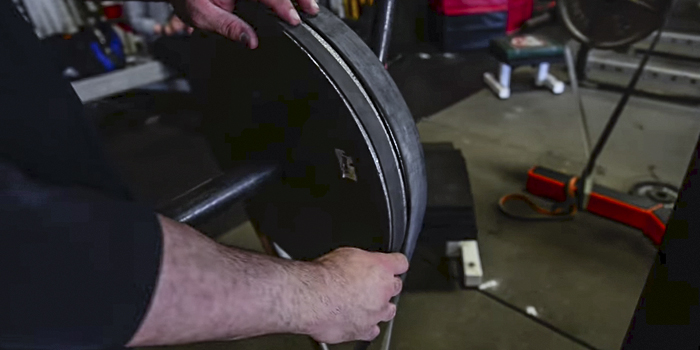
Originally published in March 2016
“HRV is great...but, what about rack height???”
—Mark Watts, Robert Morris University Speed and Strength Seminar
The above statement about heart rate variability training could be applied directly to the use of bands in your training. A few "HRVs" that come with band tension are percentage of band tension at the top, speed-strength, strength-speed, circa-max, explosive power, and overspeed eccentrics.
The focus of this article is to help you find your rack height — in this case, that means band tension and setting it up correctly so that all of your HRVs fall into place later on.
MONOLIFTBANDS WITH INTRO from SUNYUBSTRONG on Vimeo.
Getting The Right Band Tension for Your Setup
It’s not overly important that you know the exact tension of every band setup. That being said, you do need to have a consistent setup for your bands that will give you the same tension every time. This setup should give you tension similar to those that were popularized by Westside Barbell.
In the video below we demonstrate how we set-up our bands for squatting in a standard power rack so that they match the tensions in the monolift.
SETTING SQUAT BANDS UP CORRECTLY- POWER RACKS from SUNYUBSTRONG on Vimeo.
In the video below, we show you how to test your setup. Only test one set of bands. Once you have your setup determined it will give you accurate tensions on all your bands.
- Set-up your bands
- Put them on the bar
- Put the bar on your back
- Stand on the scale
- Record weight
CHECKING BAND TENSION FOR SQUATS from SUNYUBSTRONG on Vimeo.
After you use the above technique, use this formula to calculate your band tension:
(Total weight on scale) – (your body weight) – (bar weight) = band tension.
Here is what your approximate tension should be. Once your setup is correct for one set of bands, it will be correct for all the rest. Keep in mind these are for the squat.
“25% band tension at the top for general dynamic effort training…” Whaaaaaat?!
If you’re anything like me, when people start talking about percents and other various mathematical terms, my brain seems to shut down. I’ll be honest; I started following the Conjugate Method in the early 2000’s and it wasn’t until about 2008 when the percents in band tension that Louie talks about started clicking in my head. I DO remember a chart that elitefts put out as sort of a cheat sheet for using bands in your training for various strength levels. Guess what, I followed the chart in my own training and my lifts went up. Weird.
Below is a similar chart for tensions and movements with some modifications that have worked well for our athletes. Keep in mind, this is just general dynamic effort work and not when we are peaking for any competition. These are also guidelines, not commandments of the weight room that will cause lightning strikes if not followed.
How to Set-up Your Band for Bench Press
How to Set-Up Your Bands for Deadlift












Squat or Bench Max Number of chains/ side
100 – 200lbs = ½ chain
205 – 315lbs = 1 chain
325 – 405lbs = 2 chains
415lbs and up = 3 chains
These aren't set in stone but are where we usually start
This is all covered in my book. https://www.elitefts.com/catalog/product/view/id/32610/s/conjugate-u-by-nate-harvey/
Hope that helps